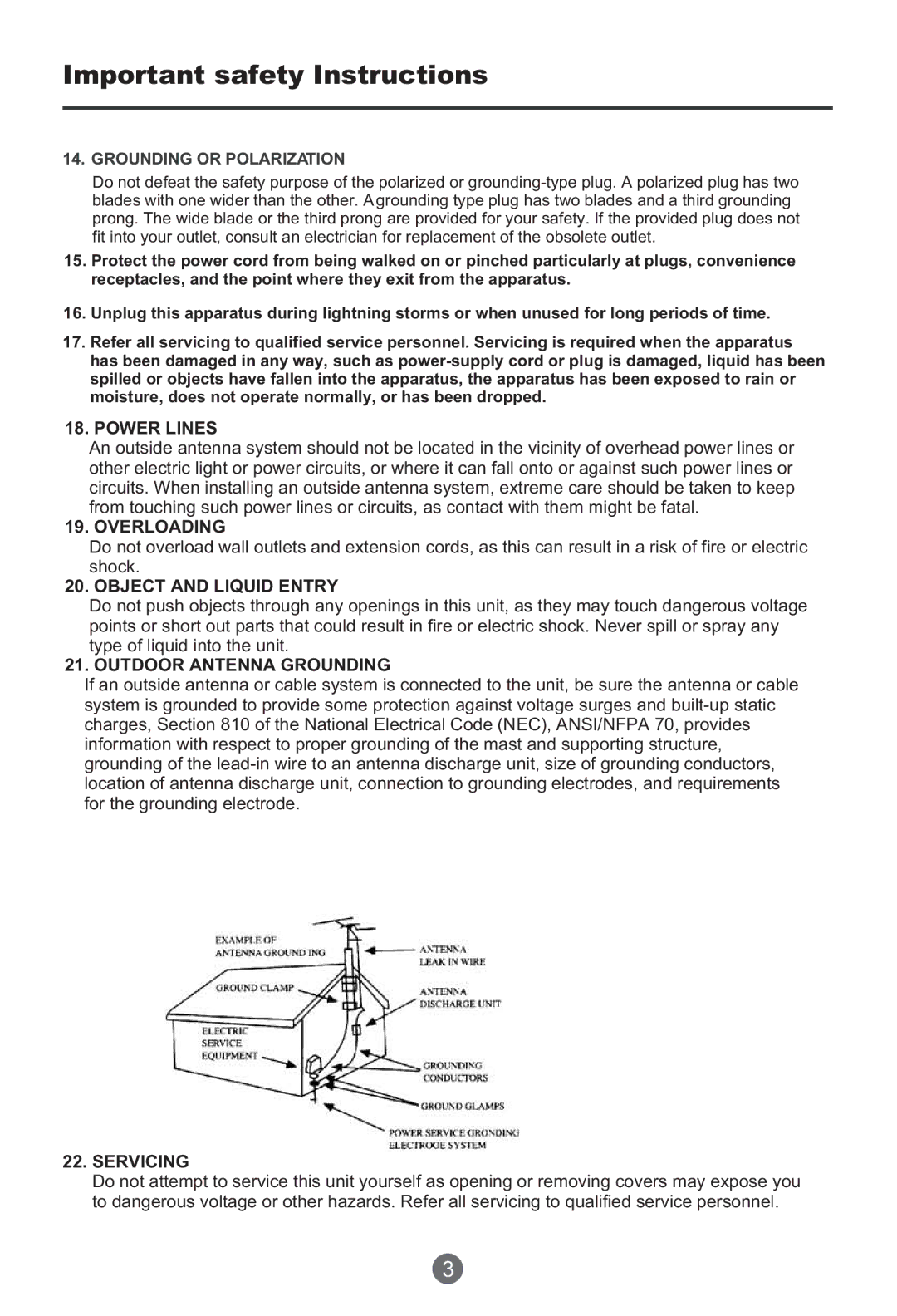
Important safety Instructions
14.GROUNDING OR POLARIZATION
Do not defeat the safety purpose of the polarized or
15.Protect the power cord from being walked on or pinched particularly at plugs, convenience receptacles, and the point where they exit from the apparatus.
16.Unplug this apparatus during lightning storms or when unused for long periods of time.
17.Refer all servicing to qualified service personnel. Servicing is required when the apparatus has been damaged in any way, such as
18.POWER LINES
An outside antenna system should not be located in the vicinity of overhead power lines or other electric light or power circuits, or where it can fall onto or against such power lines or circuits. When installing an outside antenna system, extreme care should be taken to keep from touching such power lines or circuits, as contact with them might be fatal.
19. OVERLOADING
Do not overload wall outlets and extension cords, as this can result in a risk of fire or electric shock.
20. OBJECT AND LIQUID ENTRY
Do not push objects through any openings in this unit, as they may touch dangerous voltage points or short out parts that could result in fire or electric shock. Never spill or spray any type of liquid into the unit.
21. OUTDOOR ANTENNA GROUNDING
If an outside antenna or cable system is connected to the unit, be sure the antenna or cable system is grounded to provide some protection against voltage surges and
22.SERVICING
Do not attempt to service this unit yourself as opening or removing covers may expose you to dangerous voltage or other hazards. Refer all servicing to qualified service personnel.
3
